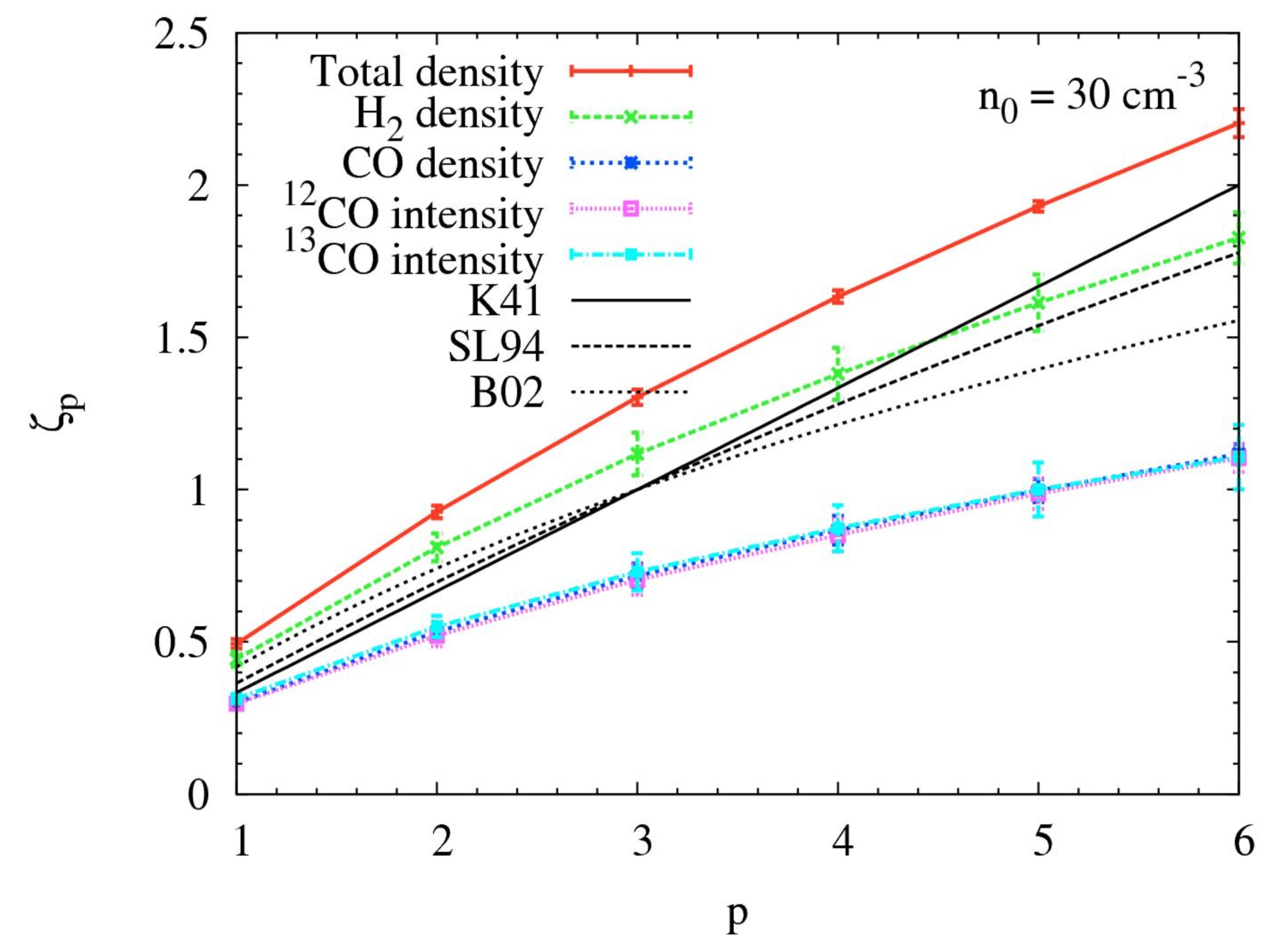We compute structure functions and Fourier spectra of 2D centroid velocity maps in order to study the gas dynamics of typical molecular clouds in numerical simulations. We account for a simplified treatment of time-dependent chemistry and the non-isothermal nature of the gas and use a 3D radiative transfer tool to model the CO line emission in a post-processing step. We perform simulations using three different initial mean number densities of n0 = 30, 100 and 300 cm-3 to span a range of typical values for dense gas clouds in the solar neighbourhood. We compute slopes of the centroid velocity increment structure functions (CVISF) and of Fourier spectra for different chemical components: the total density, H2 number density, 12CO number density as well as the integrated intensity of 12CO (J = 1 –> 0) and 13CO (J = 1 –> 0). We show that optical depth effects can significantly affect the slopes derived for the CVISF, which also leads to different scaling properties for the Fourier spectra. The slopes of CVISF and Fourier spectra for H2 are significantly steeper than those for the different CO tracers, independent of the density and the numerical resolution. This is due to the larger space-filling factor of H2 as it is better able to self-shield in diffuse regions, leading to a larger fractal co-dimension compared to CO.
Bertram, Erik; Konstandin, Lukas; Shetty, Rahul; Glover, Simon C. O.; Klessen, Ralf S.
2015, Monthly Notices of the Royal Astronomical Society, 446, 3777
http://adsabs.harvard.edu/abs/2015MNRAS.446.3777B
